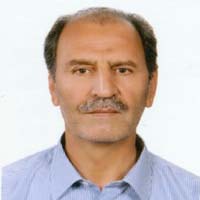Assessment of Some Parameters of Groundwater Quality Changes in the Marand Country Watershed- East Azarbayejan
Author(s):
Article Type:
Research/Original Article (دارای رتبه معتبر)
Abstract:
Introduction
Groundwater is the only major source of water for drinking, agricultural and industrial purposes in the Marand city, and its vital importance makes sure that its quality is seriously considered. With qualitative zoning, the process of underground water quality changes is determined at any time, place, and condition. It is possible to save time and cost by removing the stations with similar quality status and install new stations at times that are different or critical. In this paper, using the observational data of wells in Marand watershed, the spatial distribution of some groundwater quality parameters has been studied and analyzed using land-based methods. Geostatistical methods for estimating the unknown are remarkably effective.
Materials and Methods
In order to predict the spatial distribution of groundwater quality, data was collected from 48 water wells, semi-deep wells, springs, and others from the Water Resources Management Company. In this research, the spatial variation process of five qualitative parameters of water include EC, electrical conductivity, chlorine and sulfate (SO42-) anions, and Sodium Rate Absorption (SAR) and soluble solids (TDS): Total Dissolved Salts) were studied. After reviewing, some of them were omitted due to statistical deficiencies. Common time base was selected for studying the Blue Years 2003-2005, and the years 1388-88 and 1391-1391. Data homogeneity was evaluated for the statistical period between 1384-1384 by the sequencing test method. According to the mentioned method, there was no heterogeneity in the data. Statistical deficits were determined according to the correlation coefficient of a variable. Data were normalized using SPSS 18.0 software using logarithmic transformation method and their elongation and bending values were obtained in the range -2 and 2. In this study, for estimation of groundwater quality parameters including EC, TDS, Cl-, SAR and SO42-, piezometric wells data were used during the years 84, 88 and 91. Statistical analysis methods consisted of conventional Kriging method in Spherical, Gaussian and exponential modes and Weighted Inverse Distance (IDW) methods with power from 1 to 3 were studied. Cross-validation, G statistics (GetisOrd General G) and Morans Index were used to select the best and most suitable interpolation method. The values of all three evaluation methods were calculated and analyzed using Arc / GIS 10.3 software.
Results and Discussion
Based on the cross-evaluation method, the Kriging method is less effective than RMSE and ME in comparison with the Inverse Distance Weighting method. The zonation map of anion SO42- in year 2012 with G statistics and Moran index was 21.41 and 0.99 %, had the highest interaction in spatial structure and EC zonation map in year 2005 with Moran index and G statistic was 0.16 and 45 respectively has the least interaction of spatial structure. Charts of Changes in Quality Parameters showed that, water quality in latitude and longitude, values which were Cl, EC, SAR, and TDS and SO42 anions between the years 2005-2009 in the western-eastern part have been intangible and have been steeply sloping in the year 91. But in the North-South direction of 84 to 91 increased and then decreased in the middle of basin. Finally, by disconnecting the map of land use and geology of the watershed with the zoning maps of each of the parameters, it is concluded that due to the distribution of villages, residential areas and agricultural lands around them in the center and east of the watershed, the trend of groundwater quality parameters had been changed. The underground waters of Marand country watershed were influenced by human activities. Also, some geological formations and gypsum and dolomite minerals in the area in groundwater quality have led to an increase in TDS values and sulfidation of water resources in the eastern parts of the basin.
Conclusion
Groundwater quality is always influenced by various factors such as flow direction, groundwater level, climatic factors (precipitation, evapotranspiration, etc.), type and composition of geological formations of the region and human factors (land use, extraction of groundwater resources, Entry of household wastewater and agriculture into groundwater resources, etc.). Therefore, due to the importance of the use of groundwater resources and the limitations of its use, it is suggested that continuous monitoring of groundwater quality changes should be carried out using ground-based methods and in order to evaluate the effective factors of water quality parameters spatial distribution maps was prepared and analyzed. In the present study, based on the previous studies, two geology formation and land use types were selected to prepare map of water quality parameters and it turned out that both of these factors are the most important factors affecting the groundwater quality in the Marand country watershed.Keywords:
Language:
Persian
Published:
Journal of water and soil, Volume:32 Issue: 6, 2019
Pages:
1081 to 1095
magiran.com/p1944815
دانلود و مطالعه متن این مقاله با یکی از روشهای زیر امکان پذیر است:
اشتراک شخصی
با عضویت و پرداخت آنلاین حق اشتراک یکساله به مبلغ 1,390,000ريال میتوانید 70 عنوان مطلب دانلود کنید!
اشتراک سازمانی
به کتابخانه دانشگاه یا محل کار خود پیشنهاد کنید تا اشتراک سازمانی این پایگاه را برای دسترسی نامحدود همه کاربران به متن مطالب تهیه نمایند!
توجه!
- حق عضویت دریافتی صرف حمایت از نشریات عضو و نگهداری، تکمیل و توسعه مگیران میشود.
- پرداخت حق اشتراک و دانلود مقالات اجازه بازنشر آن در سایر رسانههای چاپی و دیجیتال را به کاربر نمیدهد.
In order to view content subscription is required
Personal subscription
Subscribe magiran.com for 70 € euros via PayPal and download 70 articles during a year.
Organization subscription
Please contact us to subscribe your university or library for unlimited access!



